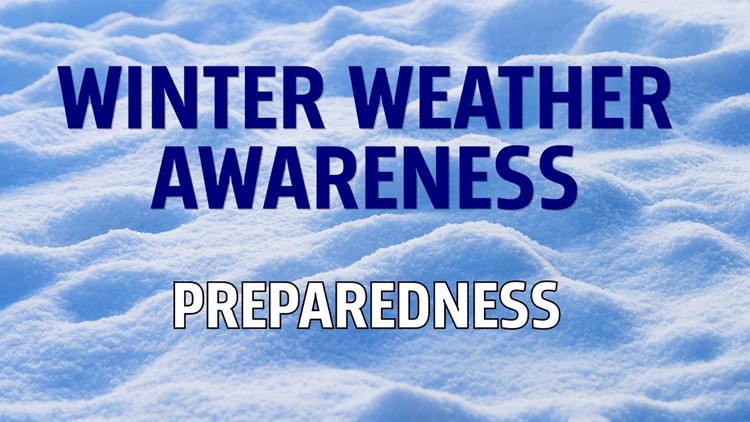This week, November 9-14th is Winter Weather Awareness week for Pennsylvania. The National Weather service will be issuing daily messages to help you prepare for the upcoming winter season.
Sunday’s message is preparation. The following is the message from our partners at the National Weather Service in State College, PA.
One of the key lessons from natural disasters over the last several years is that individuals must be prepared to deal with the effects of hazardous weather conditions. Today we explore steps you can take To mitigate against Pennsylvania’s sometimes harsh winter weather.
Heavy snow can pile up several feet, delighting skiers but clogging roads or trapping us in our homes. Freezing rain can rob us of electricity or turn our highways into deadly thoroughfares. Biting cold and strong winds can make the spot by the fireplace seem cozy but they also numb our fingers and toes or even worse. These are all facts of life in our temperate climate during the winter. However, there is plenty we can do to help protect ourselves and our loved ones.
Winter is the most dangerous time of the year for drivers. Nearly three out of every four winter weather related deaths occur on our highways. When roads are snow covered or icy, slow down and drive very carefully.
The cold weather also puts an added strain on vehicles. We suggest if you have not already done so, that you get your car in good mechanical working order now. Make sure it is tuned up. Check your tires, brakes, windshield wipers and antifreeze. If your car is in good working order, there is less chance it will fail when you need it most.
Consider keeping a blanket or a sleeping bag in your car. Prepare a winter storm survival kit for your car. This kit should include a first aid kit, flashlight with fresh batteries, shovel, sack of sand
or cat litter, booster cables, tow rope, ice scraper and brush, candy bars or other high energy non perishable food, and paper towels. You should keep your gas tank at least half full to avoid ice in the tank and fuel lines.
Call ahead to your destination to tell someone you are on your way. Try not to travel alone and use primary roads as often as possible. If you are stuck in your car during a winter storm, stay there and tie a brightly colored cloth to the antenna. Do not attempt to walk to safety unless you can clearly see the shelter you wish to reach.
You are more likely to be rescued from your vehicle than from a barn or other uninhabited, out of the way building. While waiting for help run the vehicles engine and heater for several minutes every hour, just enough to keep from becoming unreasonably cold. Make sure to open a window slightly and clear snow from the tailpipe. This will help prevent carbon monoxide poisoning from the exhaust.
Dress warmly for the cold weather. Several layers of loose fitting clothing are better than one tight fitting garment. Mittens are warmer than gloves. Do not forget your hat since the body`s greatest heat loss occurs through your head. Wind chill, the combination of cold temperatures and wind, can be a real problem. A twenty mile an hour wind makes a bearable 30°F feel like a bitter 17°F. This can have an adverse effect on your body. The strong wind increases the danger of frostbite or hypothermia.
Be especially cautious when venturing out onto an ice covered body of water. An ice thickness of at least 4” is recommended to support a person. Snowmobiles and all-terrain vehicles need at least 5” of ice, while cars and light trucks require at least 8-12”. Factors which can be used to assess the strength of the ice include the ice appearance, thickness, daily temperature, snow cover, and distribution of the load on the ice.



